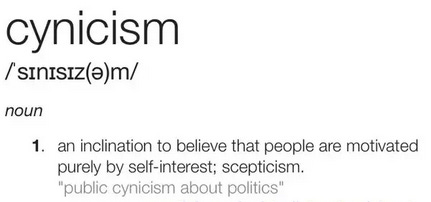Our real problem is [ ] not just about inflation or rates, which are just painful symptoms, but rather a paradigmatic failure across the political-economy. The more we only write about inflation and rates, the deeper the hole we dig.
-Michael Every
TL; DR
Michael Was Sick
Western Markets are sanguine
China is risking Japan-like deflation
Central Banking’s Role is in Question Now
Geopolitics Loom Large in Monetary Policy
Neo-Liberalism is Dying
Trudeau is a symptom of it
Full write up at bottom
Intro: Unplanned Hiatus
In today’s Market Letter from RABObank, Michael Every returns announcing the reason for his absence (Covid/ Pneumonia) and then recaps events during that hiatus.
The meat of his write up concerns first China’s deflationary trajectory, the geopolitical problems clouding our view of monetary policy and finally, an update on the death of neo-liberalism which he brought up some months ago as well right before he went ill in Rabo: Globalization Is Dead! Long Live Mercantilism!.
What follow is our summary of his rather long, densely written and thoughtful letter today. It starts with dry reporting and ends thought provokingly. Here we go…
Markets: Bad News is Good News Here…
In the span of 11 weeks following May 23rd, market dynamics have undergone substantial shifts. The US S&P index surged by an impressive 9.0%, paralleled by the declining trend in the US dollar index. A noteworthy surge of 5.7% in the Hamburg World Commodity Index, with a significant 4.5% attributed solely to July, further punctuates the scene. Changes in yields also have their say: US 2-year yields elevated from 4.26% to 4.76%, paralleled by comparable patterns across different economies. Notably, the present spotlight is on the trajectory of curve steepening, a pivotal juncture with implications of bullish or bearish inclinations, reflective of deflation, rate cuts, or even the specter of stagflation.
…But Not in China
Curiously, China stands as the exception to the 'bad is good' perspective. A lower-for-longer economic context finds resonance here. China's yields experienced downward adjustments, and economic indicators defy the prevailing narrative of bolstered global growth. Pertinent challenges include dwindling imports and negative year-on-year prints in both CPI and PPI. Remarkably, the West, fixated on the twin specters of deflation and rate cuts, seemingly dismisses this conspicuous anomaly.
Conundrums and Challenges: The Central Banks' Tightrope
As Western central banks grapple with conflicting data, their ability to revert to prior rate lows remains uncertain. Various factors complicate this landscape:
Aging Workforce and Inflation Pressures: The convergence of an aging workforce and remarkably low unemployment sparks wage inflation demands.
Inevitable Defense Spending: Imperative needs for significant government-led defense spending come to the fore.
Manufacturing Resurgence: Onshoring and reshoring trends project to amplify manufacturing resurgence.
Supply Strain and Market Dynamics: Imposed supply limitations wield their influence on commodity markets.
Oligopolies and Price Hikes: Global oligopolies and monopolies exploit favorable conditions to elevate prices.
Note in Micheal’s list newer themes Rearming, Reshoring, and Onshoring (We wrote about from Zoltan’s perspective here) are now present in our #2 and #3 summaries. Meanwhile #4 is a direct result of a shortage of commodity collateral from BRICS behavior and broken supply chains.
Once again, secular changes are making heir way into the world of Macro Analysis



